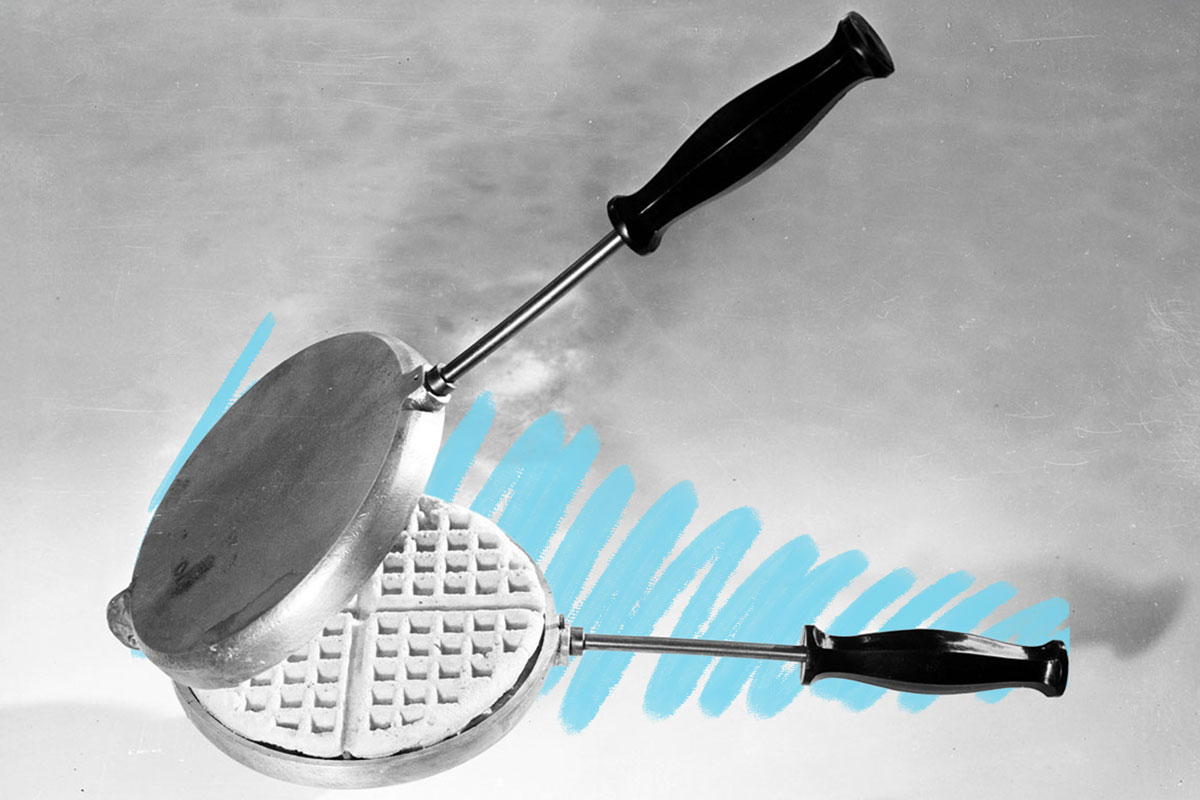The ancient Greeks had waffle irons.
It’s easy to assume waffles are a recent invention after cooking them (or having them cooked for you) on electric appliances your whole life. But waffle irons are far older than one might expect. All you need to make a waffle is metal, heat, and batter, and ancient Greeks had all three at their disposal.
Ancient Greeks (and later, ancient Romans) used a pair of cooking irons (flat or patterned metal plates with long handles) over a fire to cook a batter of flour and either water or goat’s milk. The result was a wafer-like treat called panis obelius, named either for its suggested retail price (one obol coin) or because it was described as being roasted on a spit known as obeloi.
These ancient waffles could have all kinds of add-ins, including olives, figs, cheese, herbs, or honey, and were eaten during festive rituals. The treat eventually evolved into the ancient Roman crustulum, a sweet, crisp, biscuit-like food made with honey, flour, lard, and a couple of hot irons.
Europeans continued to evolve the waffle throughout the Middle Ages. In Italy, ferratelle biscuits, a popular homemade treat made with patterned irons, may have developed directly from ancient crustulum. The Catholic Church used similar iron plates, inscribed with religious designs, to make Communion wafers, and eventually street vendors started selling a leavened, secular version. The traditional “waffle” pattern emerged sometime in the 1200s, and such waffle irons even appeared in medieval and Renaissance art.







